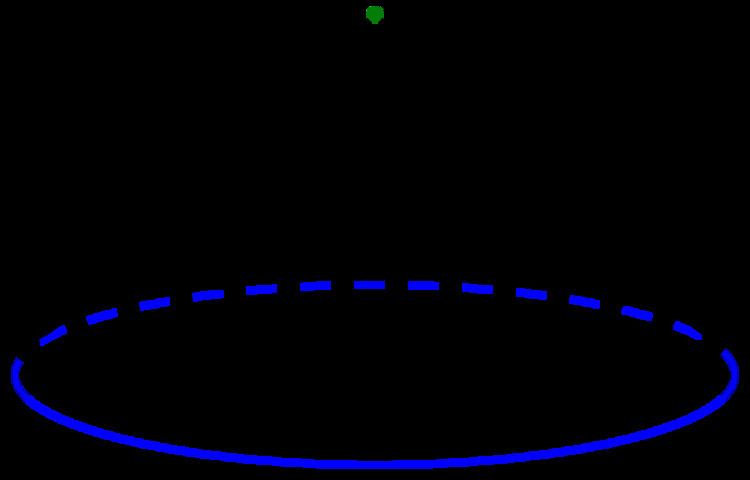 | ||
In topology, especially algebraic topology, the cone CX of a topological space X is the quotient space:
Contents
of the product of X with the unit interval I = [0, 1]. Intuitively we make X into a cylinder and collapse one end of the cylinder to a point.
If X sits inside Euclidean space, the cone on X is homeomorphic to the union of lines from X to another point. That is, the topological cone agrees with the geometric cone when defined. However, the topological cone construction is more general.
Examples
Properties
All cones are path-connected since every point can be connected to the vertex point. Furthermore, every cone is contractible to the vertex point by the homotopy
ht(x,s) = (x, (1−t)s).The cone is used in algebraic topology precisely because it embeds a space as a subspace of a contractible space.
When X is compact and Hausdorff (essentially, when X can be embedded in Euclidean space), then the cone CX can be visualized as the collection of lines joining every point of X to a single point. However, this picture fails when X is not compact or not Hausdorff, as generally the quotient topology on CX will be finer than the set of lines joining X to a point.
Reduced cone
If
With this definition, the natural inclusion
Cone functor
The map
